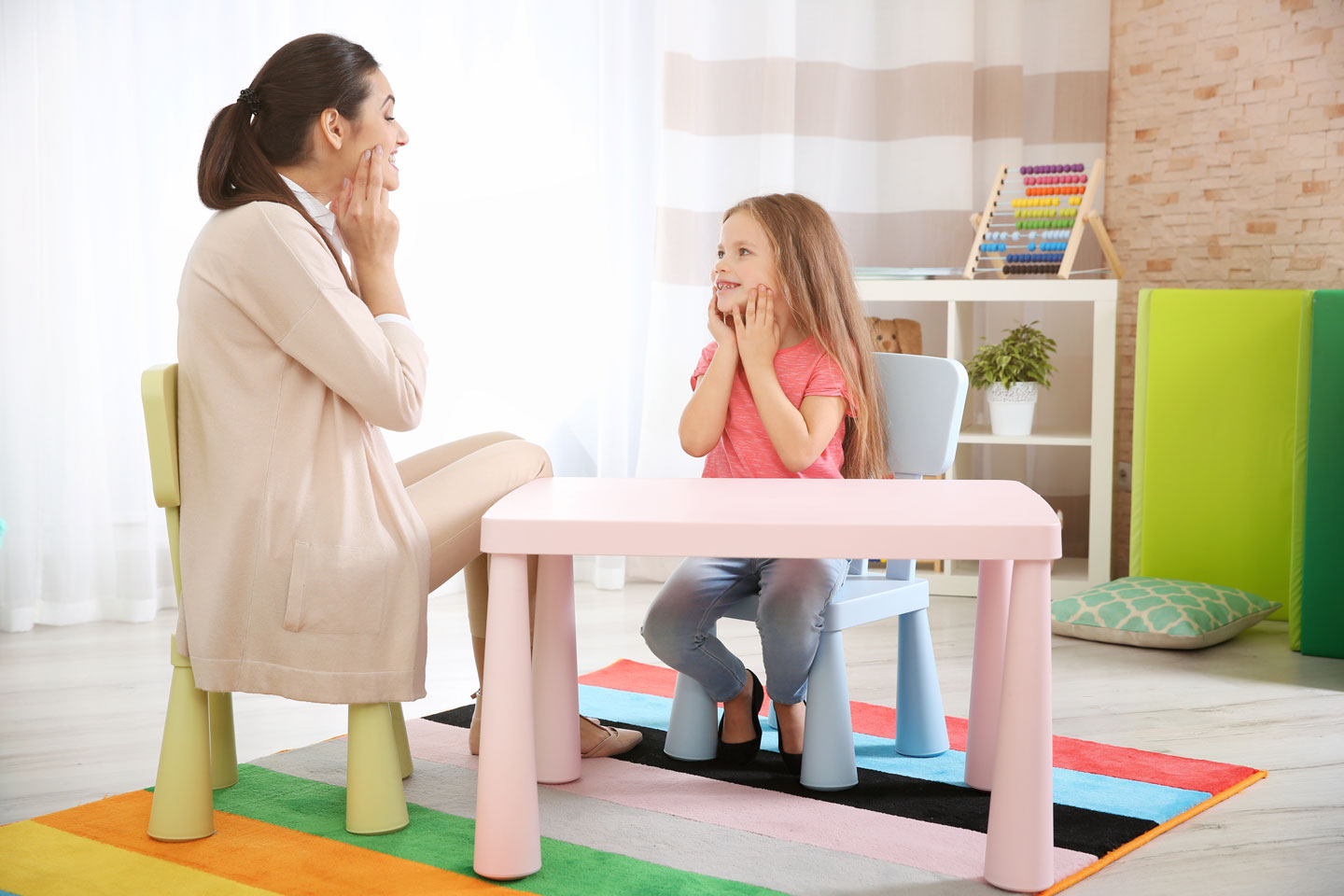by Nicole Kolenda
As a Speech Language Pathologist with a specialization in Speech Sound Disorders, I am constantly teaching and thinking (and speaking!) about clear speech production. On the path to clear, adult speech, all children will have a learning curve. Think about the 12-month-old saying “ba-ba” for bottle or the 18th month old saying “ca” for cat. We have all heard a 2-year old’s “wed” substituted for “red” as well as “lellow” for “yellow”—most likely on multiple occasions. These are expected errors for their respective ages and do not raise any red flags.
When these types of errors persist past a certain age—for instance if the child who produced “ca” for cat, continued with this pattern of *Final Consonant Deletion (no→nose, pi→pick) well into her 4th year—we would most likely enroll her into speech therapy. There may be obvious reasons as to why your child is having speech difficulty, i.e., a diagnosis of Dysarthria or Childhood Apraxia of Speech—but there are other things a good Speech Language Pathologist will consider that may be inhibiting clear speech production or hindering progress in therapy.
- Persisting Oral Habit(s)Does your child still use a pacifier? Is he a thumb sucker? Does he suck on a favorite stuffed animal or blanket in the evening? The continuous “forward” motion required of the tongue to engage in these habits will alter the overall oral structure. You may notice the palate (or roof of the mouth) is highly arched (which could affect all palatal sounds— “sh”, “ch” “j”). The tongue may be “big” or has “low tone”—which may affect tongue tip sounds (t, d, n, l) or you may see an overbite—which could really affect a bunch of sounds—especially sounds produced with the lips (p, b, m, f, v). Try to do your best to help your child to break free of these oral habits. If he is hooked on a pacifier—you could begin slowly cutting the nipple until it is gone. Some parents also have goodbye ceremonies—where a specific date is set and the child gets rid of all of his pacifiers. Thumb and finger suckers may have luck with oil of clove or oil of oregano dabbed on the child’s fingers. Personally—those did not work for my son—but this helped: Mavala Stop
- Hypotonicity or Low Tone. Does your child drool? Have difficulties with managing certain food textures—or prefers only “soft” foods such as mashed potatoes, yogurt, cereal drenched in milk…etc. Your SLP will do a full oral mechanism examination which will evaluate the structure and function of the speech mechanism to assess whether the system is adequate for speech production. A flaccid, or low tone tongue can cause speech to sound “mushy”. If a child has difficulty puffing his cheeks and holding in air, stop-plosive sounds (b, p, k, g, t, d) may pose a challenge as that buildup of intraoral air (and subsequently a release) is needed for these sounds. If a child has difficulty with jaw gradation, you may hear that she is dropping the final sound of a word—not because she cannot articulate that sound (boàboat) but because she cannot get her jaw back into the position to align her tongue so that the tip can get up behind the front teeth and produce that “t” sound. Another thing to consider is low truncal tone—which is usually treated by an Occupational Therapist. If a child has low core strength, he will sit with his shoulders slouched in a hunched over position. This will have a great impact on his respiratory function or his ability to generate adequate air-flow for clear speech. Remember, speech really is just our articulators (jaw, tongue, lips, teeth) manipulating air—if the air is not there or lacking—speech is not possible. This leads me to my next point–Another thing to consider is your child’s feet. Are they meeting the ground fully and firmly? Or are they swinging about? Many times, a simple hack—such as putting a step stool under your child’s feet—will stop the moving and increase his attention span. Checking to see how well your seat and table “fit” your child is not just important for speech but is also especially important for homework. The fidgety child who cannot sit still, is seeking sensory input most likely due to reduced proprioceptive awareness (awareness of our body in space)—having a properly fitted chair will hopefully mitigate much of the movement, thus increasing attention and learning.
- Seated position. If your child is struggling with clear speech—check her seated position. Is she in a seat with all the necessary 90° angles—ankles, knees, waist? This will support her trunk—which will in turn, support her respiratory system—which produces the air needed for speech.

- Word position. Lastly, a comprehensive speech assessment should include a section on word position and how it is affecting your child’s speech. Let’s go back to the child who is having trouble articulating the final sound in the word, “ca” for cat. That child may be able to produce a “t” sound in the beginning of the word just fine—i.e., “top” which would mean she does not have any difficulty with the actual speech mechanics of the sound, but more where the sound lands in a word. Another child may be able to produce the “t” in cat and top, but deletes it completely in “meatball” and “catnip”—which you can see-is yet another word position. If you listen carefully to your child’s errors—patterns will inevitably begin to avail themselves—and one thing you may notice is that word position is affecting her ability to produce certain sounds.
*Final Consonant Deletion is a Phonological Process that should be dissolved by 3 years of age. I will discuss more about phonological processes in a future post—stay tuned.
Nicole Kolenda, M.S., CCC-SLP, P.C., is a NYS licensed/ASHA certified Speech and Language Pathologist with twenty years’ experience working with children and young adults diagnosed with Developmental Differences. Nicole ran a thriving practice on Manhattan’s Upper East Side for 15 years and has taught and supervised throughout New York City’s elite graduate programs, including Teacher’s College and New York University. Nicole has also collaborated with Manhattan’s top rated developmental pediatricians and has contributed to research in the area of speech development. Nicole continues to adjunct at NYU and Hofstra and is a supervisor/externship coordinator at the Hunter College Center for Communication Disorders. Nicole is also the clinical coordinator for the Atlas Foundation for Autism and frequently writes for parenting magazine and blogs. Most recently, Nicole has joined the team of Write Brain Books as a special needs products and program consultant. Her unique combination of training (including a health and wellness coaching certification from the Institute of Integrative Nutrition) and experience has also allowed her to seamlessly support the special needs community as a Special Needs Mom Coach. You can learn more about her at www.nicolekolenda.com.
Facebook: https://www.facebook.com/NicoleKolendaSLP/ Twitter: https://twitter.com/NKolendaSLP

